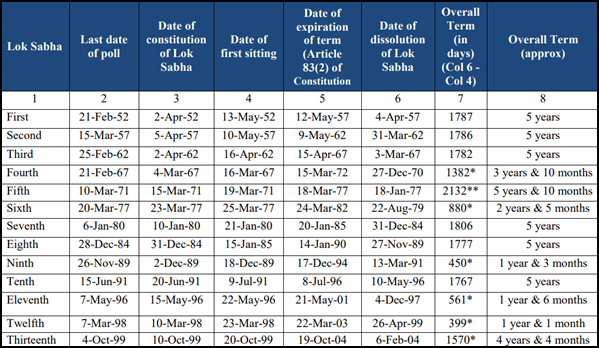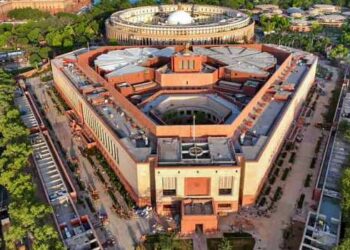India’s democratic framework thrives on the vibrancy of its electoral process, enabling citizens to actively shape governance at every level. Since independence, over 400 elections to the Lok Sabha and State Legislative Assemblies have showcased the Election Commission of India’s commitment to fairness and transparency. However, the fragmented and frequent nature of elections has sparked discussions on the need for a more efficient system. This has led to the resurgence of interest in the concept of “One Nation, One Election.”
The idea, also known as simultaneous elections, proposes aligning the election cycles of the Lok Sabha and State Assemblies. This would allow voters to cast their ballots for both tiers of government on the same day in their constituencies, though voting could still occur in phases across the country. By synchronising these electoral timelines, the approach aims to address logistical challenges, reduce costs, and minimise disruptions caused by frequent elections.
The High-Level Committee Report on Simultaneous Elections in India, released in 2024, provided a comprehensive roadmap for implementing this vision. Its recommendations were accepted by the Union Cabinet on 18th September 2024, marking a significant step towards electoral reform. Proponents argue that such a system could enhance administrative efficiency, reduce election-related expenditures, and promote policy continuity. As India aspires to streamline governance and optimise its democratic processes, the concept of “One Nation, One Election” has emerged as a key reform requiring thoughtful deliberation and consensus.
Historical Background
The concept of simultaneous elections is not a new idea in India. Following the adoption of the Constitution, elections to the Lok Sabha and all State Legislative Assemblies were conducted simultaneously from 1951 to 1967. The first general elections to the Lok Sabha and State Assemblies were held together in 1951-52, a practice that continued for three subsequent general elections in 1957, 1962, and 1967.
However, this cycle of synchronised elections was disrupted in 1968 and 1969 due to the premature dissolution of some State Legislative Assemblies. The Fourth Lok Sabha was also dissolved prematurely in 1970, with fresh elections held in 1971. Unlike the First, Second, and Third Lok Sabha, which completed their full five-year terms, the Fifth Lok Sabha’s term was extended until 1977 under Article 352 because of the declaration of Emergency. Since then, only a few Lok Sabha terms have lasted the full five years, such as the Eighth, Tenth, Fourteenth, and Fifteenth. Others, including the Sixth, Seventh, Ninth, Eleventh, Twelfth, and Thirteenth, were dissolved early.
State Assemblies have faced similar disruptions over the years. Premature dissolutions and term extensions have become a recurring challenge. These developments have firmly disrupted the cycle of simultaneous elections, leading to the current pattern of staggered electoral schedules across the country.
Timelines of key milestones of various Lok Sabhas
*Mid-term polls were held. Dissolution took place before the elections.
**Extension due to proclamation of Emergency.
High-Level Committee on Simultaneous Elections
The High-Level Committee on Simultaneous Elections, headed by former President Ram Nath Kovind, was constituted by the Government of India on 2nd September 2023. Its primary objective was to explore the feasibility of conducting simultaneous elections for the Lok Sabha and State Legislative Assemblies. The committee solicited extensive public and political feedback, and consulted with experts to analyse the potential benefits and challenges associated with this proposed electoral reform. This report presents a detailed overview of the committee’s findings, its recommendations for constitutional amendments, and the anticipated impact of simultaneous elections on governance, resources, and public sentiment.
Key Takeaways:
- Public Response: The Committee received over 21,500 responses, with 80% in favour of simultaneous elections. The responses came from all corners of the country, including Lakshadweep, Andaman and Nicobar, Nagaland, Dadra, and Nagar Haveli. The highest responses were received from Tamil Nadu, Maharashtra, Karnataka, Kerala, West Bengal, Gujarat, and Uttar Pradesh.
- Responses from Political Parties: 47 political parties submitted their views. Of these, 32 parties supported simultaneous elections, citing benefits like resource optimization and social harmony. 15 parties raised concerns about potential anti-democratic effects and marginalization of regional parties.
- Expert Consultations: The Committee consulted Former Chief Justices of India, Former Election Commissioners, and legal experts. A majority supported the concept of simultaneous elections, emphasizing the waste of resources and socio-economic disruptions caused by frequent elections.
- Economic Impact: Business organizations like CII, FICCI, and ASSOCHAM supported the proposal, highlighting the positive impact on economic stability by reducing disruptions and costs associated with election cycles.
- Legal and Constitutional Analysis: The Committee proposed amendments to Articles 82A and 324A of the Indian Constitution to enable simultaneous elections for the Lok Sabha, State Assemblies, and local bodies.
- Phased Approach to Implementation: The Committee recommended implementing simultaneous elections in two phases:
-
- Phase 1: Synchronizing Lok Sabha and State Legislative Assemblies elections.
- Phase 2: Synchronizing elections for Municipalities and Panchayats with Lok Sabha and State Legislative elections within 100 days.
- Electoral Roll and EPIC Harmonization: The Committee highlighted inefficiencies in electoral roll preparation by State Election Commissions and recommended creating a Single Electoral Roll and Single EPIC for all three tiers of government. This would reduce duplication and errors, safeguarding voter rights.
- Public Sentiment on Frequent Elections: Public responses indicated significant concern about the negative impacts of frequent elections, such as voter fatigue and governance disruptions, which are expected to be mitigated by simultaneous elections.
Rationale for Simultaneous Elections
The points below are based on the findings of the report issued by the High-Level Committee on Simultaneous Elections, headed by former President Ram Nath Kovind:
- Promotes Consistency in Governance: Due to the ongoing cycle of elections in various parts of the country, political parties, their leaders, legislators, and both State and Central Governments often focus their efforts on preparing for upcoming elections rather than prioritizing governance. The adoption of simultaneous elections would refocus the government’s attention towards developmental activities and the implementation of policies aimed at promoting the welfare of the masses.
- Prevents Policy Paralysis: The implementation of the Model Code of Conduct during elections disrupts routine administrative activities and developmental initiatives. This disruption not only hampers the progress of vital welfare schemes but also leads to governance uncertainty. Holding simultaneous elections would mitigate the prolonged enforcement of the MCC, thereby reducing policy paralysis and enabling continuous governance.
- Mitigates Resource Diversion: The deployment of a substantial number of personnel for election duties, such as polling officials and civil servants, can lead to significant diversion of resources from their core responsibilities. With elections conducted simultaneously, the need for frequent deployment would diminish, allowing government officials and public institutions to focus more on their primary roles rather than election-related tasks.
- Preserves Regional Party Relevance: Holding simultaneous elections does not undermine the role of regional parties. In fact, it encourages a more localized focus during elections, enabling regional parties to highlight their unique concerns and aspirations. This setup fosters a political environment where local issues are not overshadowed by national election campaigns, thus preserving the relevance of regional voices.
- Enhances Political Opportunities: Conducting elections simultaneously entails a more equitable allocation of political opportunities and responsibilities within political parties. Currently, it is not uncommon for certain leaders within a party to dominate the electoral landscape, contesting elections at multiple levels and monopolizing key positions. In the scenario of simultaneous elections, there arises greater scope for diversification and inclusivity among political workers representing various parties, allowing a wider range of leaders to emerge and contribute to the democratic process.
- Focus on Governance: The ongoing cycle of elections across the country diverts attention from good governance. Political parties focus more on election-related activities to secure victories, leaving less time for development and essential governance. Synchronised elections would allow parties to dedicate their efforts to addressing the needs of the electorate, reducing instances of conflicts and aggressive campaigning.
- Reduced Financial Burden: Conducting simultaneous elections could significantly cut down the financial costs associated with multiple election cycles. This model reduces the expenditure related to the deployment of resources like manpower, equipment, and security for each individual election. The economic benefits include a more efficient allocation of resources and better fiscal management, fostering a conducive environment for economic growth and investor confidence.
The High-Level Committee on Simultaneous Elections, led by former President Ram Nath Kovind, has laid the groundwork for a transformative shift in India’s electoral process. By aligning the election cycles of the Lok Sabha and State Legislative Assemblies, the committee’s recommendations promise to address long-standing challenges associated with frequent elections, such as governance disruptions and resource wastage. The proposed phased approach to implementing simultaneous elections, along with constitutional amendments, could pave the way for a more efficient and stable electoral environment in India. With widespread public and political support, the concept of simultaneous elections stands poised to streamline India’s democratic processes and bolster the efficiency of governance.






